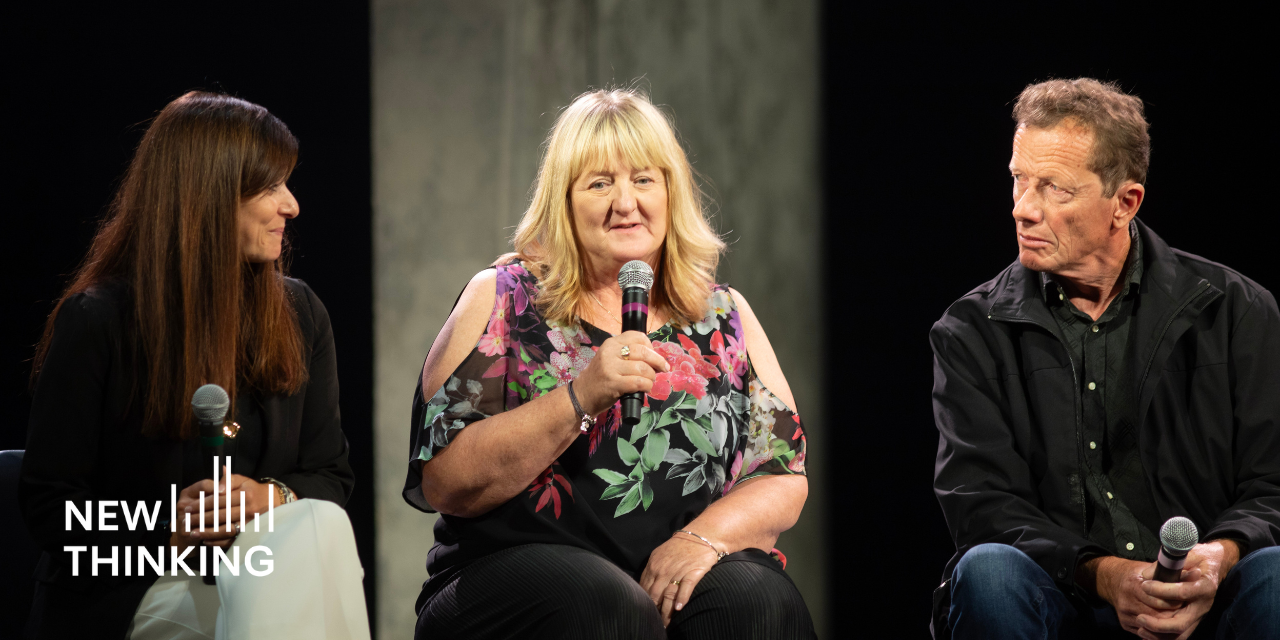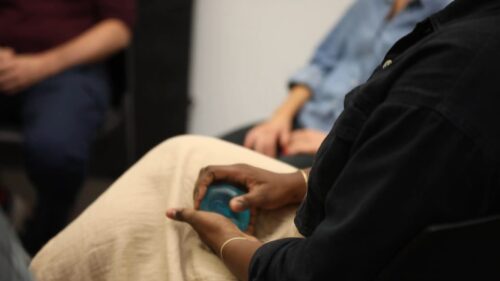Kevin Burke helped lead the effort to create the Hennepin County Drug Court in 1997, and advocated for the creation of the Hennepin County Mental Health Court as well. Appointed to the bench in 1984, he currently serves as an adjunct professor of law at the University of Minnesota and the University of St. Thomas Law School. The Center for Court Innovation’s Carolyn Turgeon spoke with Judge Burke about problem-solving justice.
Why do you think drug courts have proven to be so successful?
I’ve thought a lot about why the initial generation of drug courts was so successful, although the courts were all different. Some were highly selective as to who they would take in—I say this facetiously, but in some of them the admissions criteria were so narrow that only Mother Teresa with a small amount of marijuana could have gotten in—and then others, like Hennepin, took everyone. Yet the evaluations were all pretty positive.
I think that what it comes down to is this: there are lessons to be learned for the entire justice system from problem-solving courts. Problem-solving courts placed a high premium on the value of listening to the defendants and creating an atmosphere in which they felt that what they said was important. When defendants left these courts, they uniformly understood what had happened and why. There’s a sociologist at New York University, Tom Tyler, and another at Barnard College, Larry Hoyer, whose research shows that people come to court expecting not to win much more often than we as professionals or judges think they do. Or put another way, some judges feel that if we rule against people 50 percent of the time, then the maximum level of satisfaction is 50 percent. But in fact, 100 percent of the people can be dissatisfied with you, whether they win or lose.
I think that’s the principal message of problem-solving courts: that it’s not so much whether you have sophisticated screening techniques, or whether or not you have acupuncture or other tools that can make drug courts or mental health courts effective, but it’s about the atmosphere you create in a courtroom. Problem-solving courts create atmospheres in which the people feel that the judges and court personnel care about them as individuals. And I think that when you’re dealing with the mentally ill or the chemically dependant, a large part of the challenge is the sense of hopelessness or lack of self esteem that many of these people have.
What do you do to create that sort of atmosphere in the courtroom?
In our court we’ve done things ranging from bringing in professionals who study non-verbal communication to having judges videotape themselves on the bench and then sit down with a professional to look at how they react to people. We’ve brought in people who specialize in listening, and tried to improve our listening skills. Listening is not the absence of talking, and I think that one of the challenges for judges and particularly for judges in problem-solving courts is that they have to be among the best listeners. They have to create an atmosphere in which defendants and victims feel that they are being listened to, whether or not the judge actually agrees with what is being said.
Hennepin County has gone a long way toward institutionalizing problem-solving in its courts. How did you accomplish it?
All the judges in Hennepin have gone through training both on how to improve their actual ability to listen as well as their perceived willingness to listen, and we’ve also done a number of research projects to determine things like whether or not people understand what the order is, after they leave court. There was a time when some of the judges believed that you couldn’t get 100 percent of the defendants to understand what they were supposed to do. But we actually did some studies in Hennepin where we interviewed the defendants five minutes after their sentencing—and didn’t tell the judge exactly when we would be doing this—to determine whether or not they understood what happened. And there were several judges who got 100 percent. This showed us that it could be done.
I was intrigued by the fact that the National Center for State Courts’ public trust and confidence study in 1999 said that 40 percent of the American public believe that judges’ orders are not understandable. Now I don’t think that that’s true, but what if it were? What if there were large numbers of poor and/or not particularly well-educated people who come through the court system and leave not understanding what happened? I think that the study we did convinced more judges that these are particularly important things to focus on, even if their present assignment wasn’t in a problem-solving court. When defendants leave a courthouse understanding what they’re supposed to do, their compliance with judges’ orders will increase. So from a utilitarian standpoint, an overburdened state court system needs to be thinking in those terms.
What are the broader implications of these studies?
I think that one broader implication is this: for the most part, the measurements that many courts use for whether they’re successful are whether or not they got the case done, and in a timely fashion. But I think you should add: did we get it done fairly? I don’t think there’s a state court in the country that has a mission statement that doesn’t have the word “fair” in it, but for the most part fairness is never measured. Fairness, it seems to me, means that you have a right to come to court and be listened to whether you’re a victim or a defendant or a litigant, and you have a right to leave understanding what happened. You don’t have a right to win, but you have a right to be listened to and to understand what is happening, and I think that at least the direction we’ve tried to go to in Hennepin is to say that what you measure is what you care about and that we will measure these things.
If you look on our web site, it’s one of the performance measures that our bench said we were willing to be publicly held accountable for. So we’ve gone to the point of saying OK, public accountability is important for courts and we’re going to be publicly accountable for these factors that I’ve talked about, and we’ll put the results up on our web site. Last year, for example, we did 9,000 surveys and 2,000 interviews about the things we’ve just been talking about.
You’ve discussed the importance of listening, and creating a supportive courtroom atmosphere. What do you think other core components and principles of problem-solving courts are?
I think neutrality for the judiciary is critically important. But there’s a difference between being neutral and not caring. Looking at the early problem-solving courts, I think that the judges initially assigned to them were less concerned about hiding that they cared than some other judges might be. I think it is important to explore ways to convey that you are neutral in an adversarial system, but that you also care about the people that appear before you.
Can you talk a bit more about the role of the judge? What else can a judge do to affect the behavior of a defendant?
When you have somebody in a position of power who cares about the defendant as an individual, that is a motivating thing. It’s not that you will not hold defendants accountable for their misdeeds, but it’s important that you come across as somebody who cares about them.
There’s another thing I try to tell judges who do this. To use the words of Jesse Jackson, the message that you are somebody and that you can be somebody is an important one to convey, especially when you have a large number of defendants—particularly minority defendants—who have the deck stacked against them. The sense of hopelessness that I mentioned is one of the barriers to getting people to change. So I think that judges, even in a relatively brief period of time—I mean in our drug court we had about 1,800 new cases a year and there were only two or three of us doing them, so it was not a small operation—can still convey that.
What can courts do to increase public trust and confidence in the justice system?
I think we need to talk in honest terms about public accountability in the justice system. What are the results that courts are willing to be accountable for? Court leaders also need to be willing to stand up at times and say, “Look, we’ve got to do some things about what’s happening in our community to make it better.”
Drug courts are a classic example where you had a lot of judges around the country who said you should be able to have available chemical dependency treatment for people who are in need of that. You can’t simply lock everybody up and then hope that they’ll stop doing drugs. I think the more recent discussions about the problems of mental health in the justice system have been another example where judges need to stand up and say, “Look, there are a lot of people who are coming through the justice system who have major mental illnesses that, left untreated, are not going to get better.”
Do you think that lessons people learn from problem-solving courts are transferable into other areas of practice?
Yes. I’ve seen an example in California of a judge who was trying to use problem-solving methodology to deal with medical malpractice cases. In a lot of medical malpractice cases the doctor may not like the results that happened but also feel that he or she did not do anything wrong. But they feel bad. And so trying to figure out some way to bring an atmosphere in which there is a winning across the board as opposed to just winners and losers makes sense.
I think there is a lot out there that would suggest that if judges and court personnel are open to change, that it will be both self-rewarding, which is good, but, more importantly, you will have more satisfied customers of the court.
January 2005

